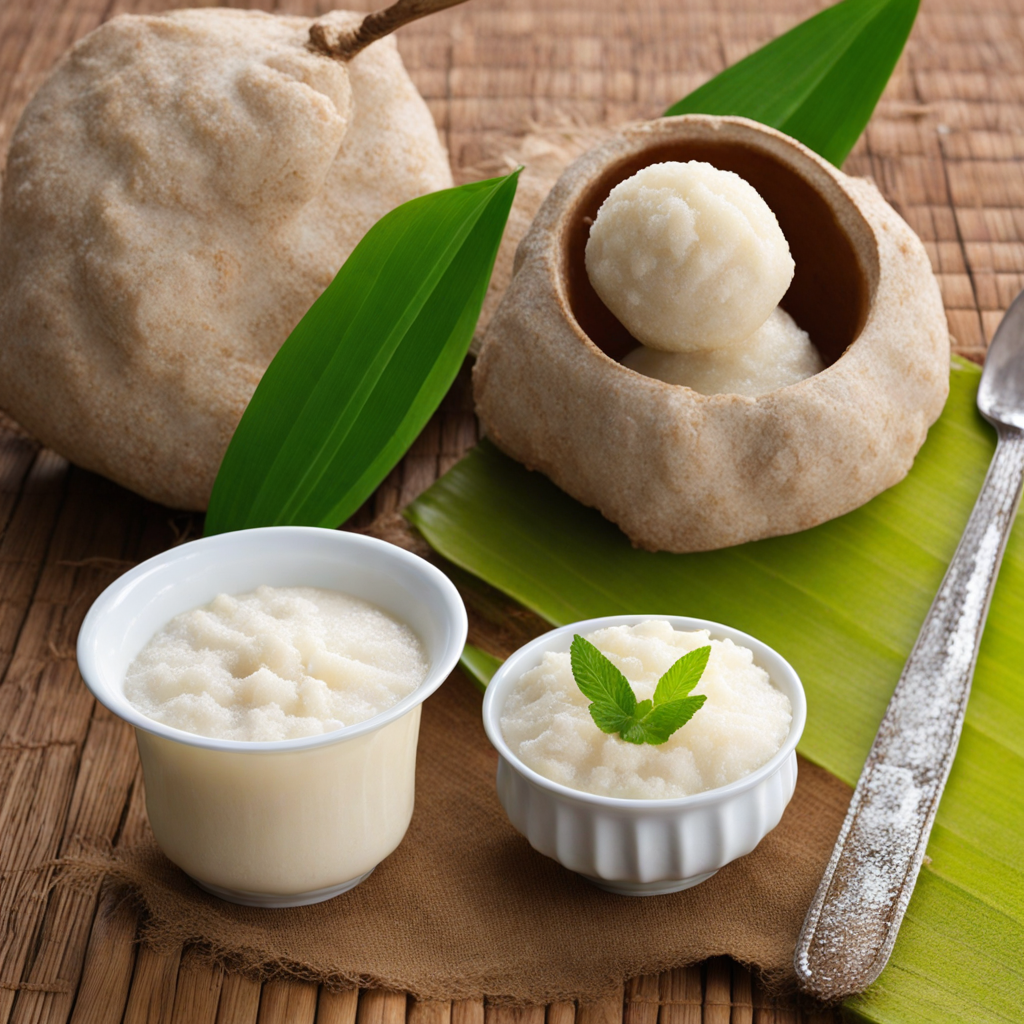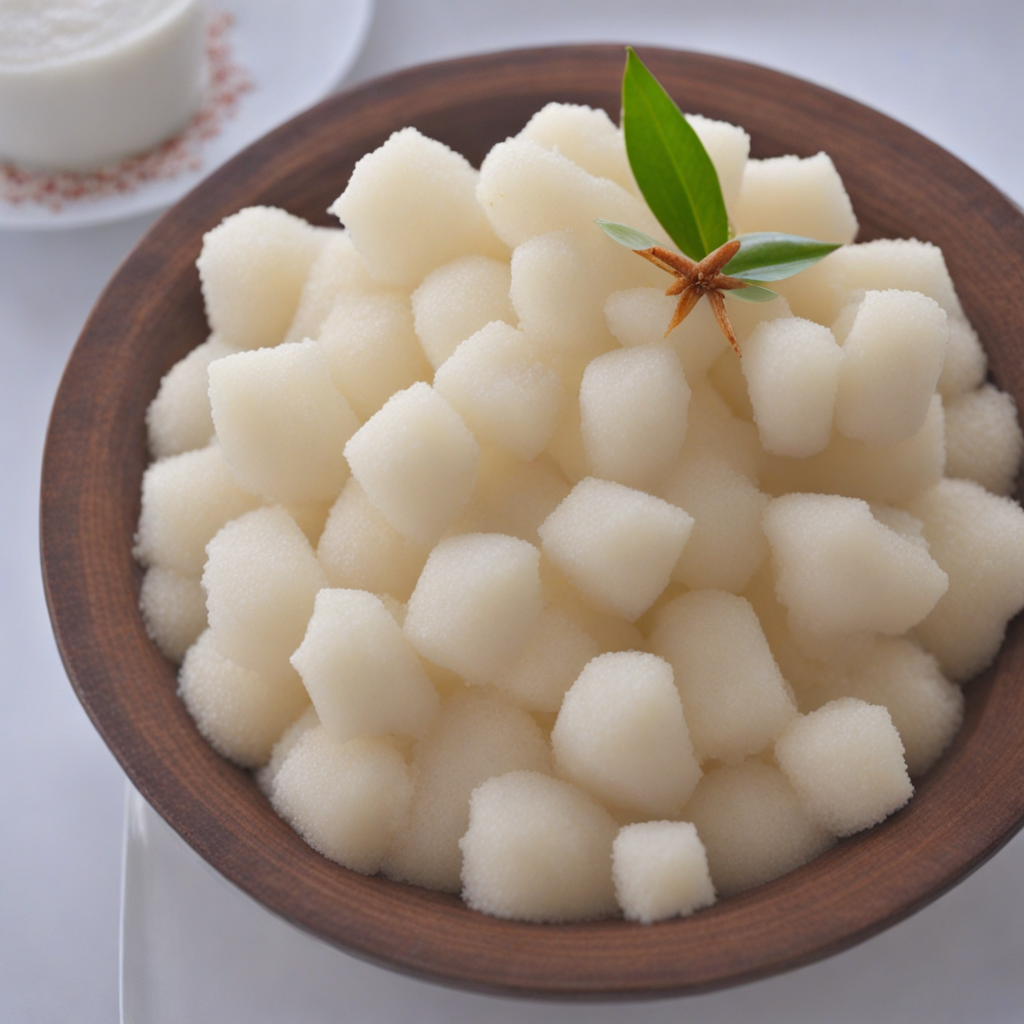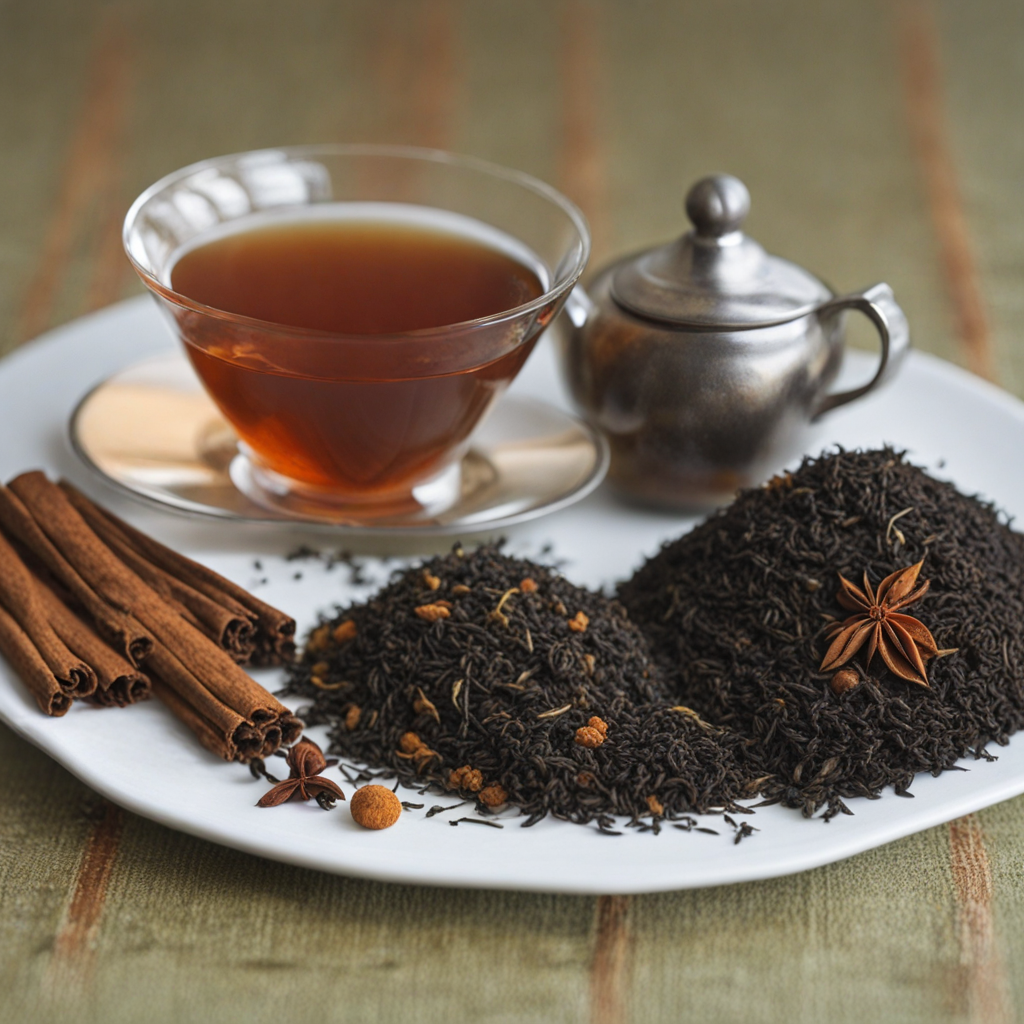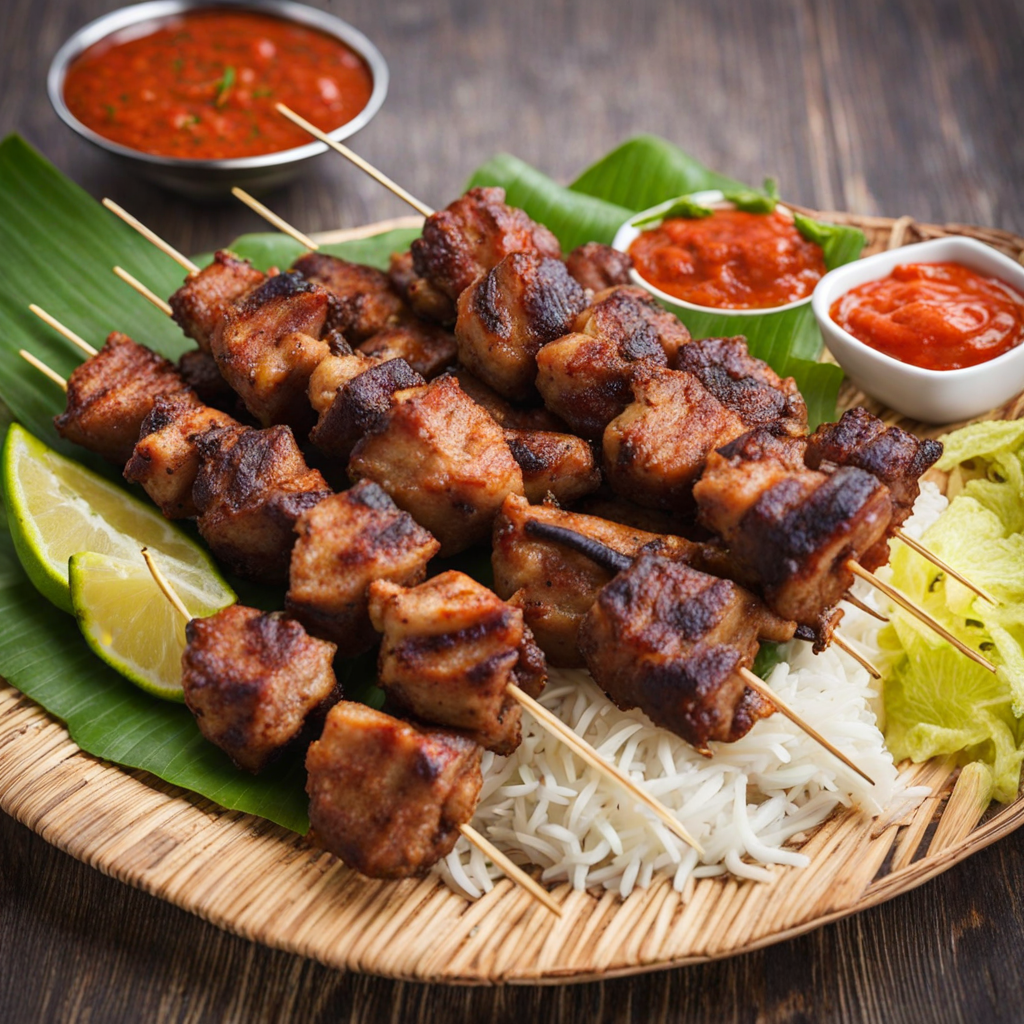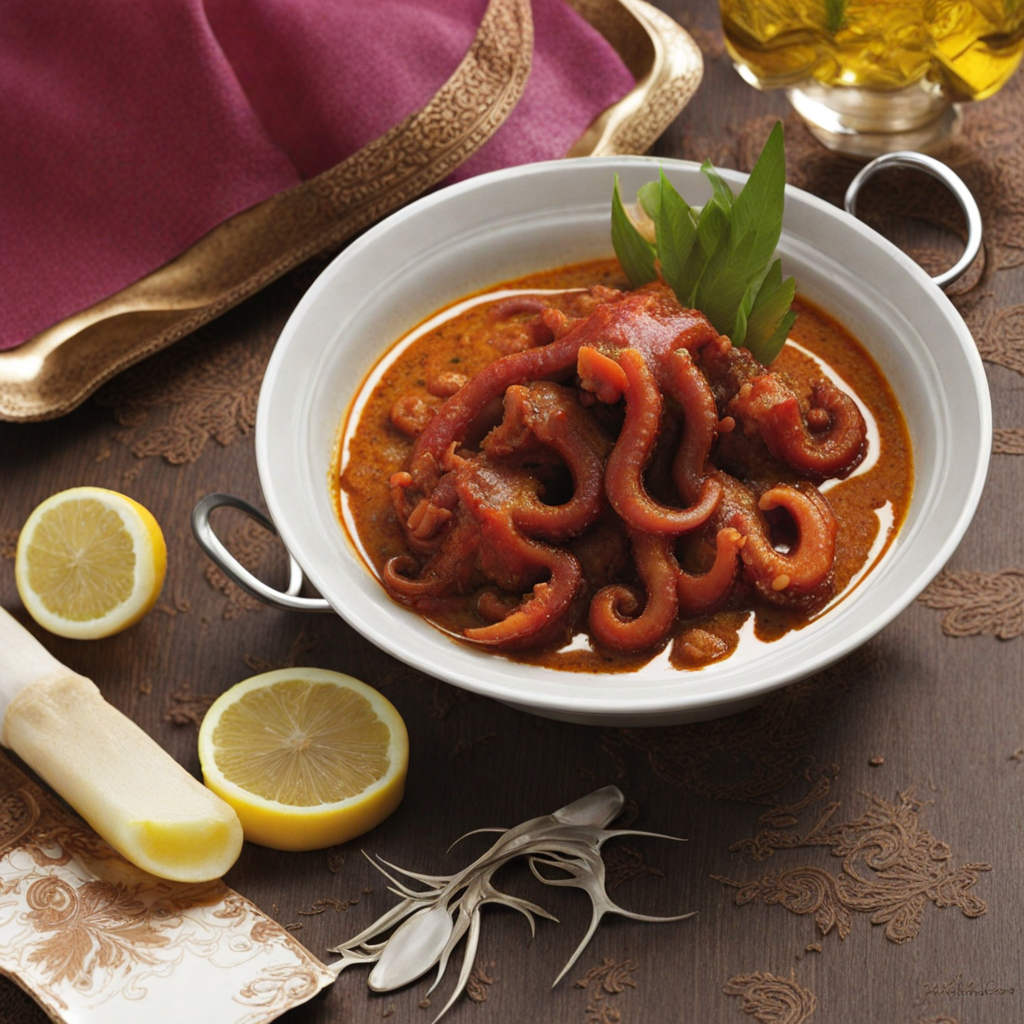Manioc Tapioca
Manioc Tapioca, a delightful dish from the Comoros Islands, showcases the unique flavors and textures derived from the cassava root, known locally as manioc. This starchy tuber is harvested and processed to create a versatile ingredient used in various culinary applications. The tapioca is often transformed into pearls or flour, which can be cooked to produce a chewy, slightly gelatinous consistency that is both satisfying and intriguing to the palate. The natural sweetness of manioc shines through, making it a perfect base for both savory and sweet dishes, often complemented by local spices and ingredients. The preparation of Manioc Tapioca is a labor of love, often involving soaking, grinding, and steaming the cassava to achieve the desired texture. In the Comoros, it is commonly served as a side dish or incorporated into hearty stews that boast vibrant flavors from fresh herbs, coconut milk, and local vegetables. The combination of the mild tapioca with the rich, aromatic profiles of the island's cuisine creates a harmonious balance that invites diners to savor each bite. The dish can also be enjoyed as a sweet treat, where it is mixed with coconut and sugar, then shaped into small cakes or puddings that are both comforting and indulgent. Exploring the flavors of Manioc Tapioca is like taking a culinary journey to the heart of the Comoros. The dish not only highlights the local agricultural bounty but also reflects the islanders' connection to their land and traditions. Each mouthful offers a unique taste experience, enriched by the use of native spices and the warmth of communal cooking. Whether you enjoy it as a savory accompaniment to a main course or as a sweet dessert, Manioc Tapioca promises to introduce your taste buds to a delightful new world of flavor that is both exotic and familiar.
How It Became This Dish
The History of Tapioca de Manioc in Comoros #### Origins of Tapioca de Manioc Tapioca de Manioc, a beloved dish in the Comoros archipelago, is deeply rooted in the region's agricultural practices and cultural traditions. The Comoros, comprising three major islands—Grande Comore, Mohéli, and Anjouan—are situated off the southeastern coast of Africa in the Indian Ocean. They are characterized by their rich biodiversity, lush landscapes, and a tropical climate that supports a variety of crops. The primary ingredient in Tapioca de Manioc is cassava, known locally as "manioc." Cassava is a starchy tuber native to South America, but it found its way to Africa through the transatlantic slave trade and early colonial exchanges. It thrived in the tropical climates of Africa, becoming a staple food source for many communities. In the Comoros, manioc was embraced for its adaptability, resilience, and ability to grow in poor soil conditions, making it an essential crop for food security. Tapioca itself, derived from the starch of the cassava root, has a long history in global culinary traditions. The process of extracting starch from cassava involves peeling, grating, fermenting, and drying the tuber, which dates back centuries. In the Comoros, traditional methods of preparing manioc have been passed down through generations, reflecting the islanders' deep connection to their land and resources. #### Cultural Significance Tapioca de Manioc holds a special place in Comorian culture, often serving as a symbol of hospitality and community. The dish is not only a staple food but also a cultural emblem that connects the people to their heritage. In communal gatherings, celebrations, and family events, Tapioca de Manioc is often prepared and shared, fostering a sense of unity and belonging among the islanders. The preparation of Tapioca de Manioc is a communal activity, often involving members of the family or community. This collaborative approach to cooking reinforces social bonds and passes down culinary knowledge. Women, in particular, play a crucial role in the preparation of manioc, embodying a tradition that empowers them and acknowledges their contributions to food culture. In many Comorian homes, Tapioca de Manioc is often served alongside fish, meat, or vegetable stews, highlighting the islanders’ resourcefulness in utilizing local ingredients. The dish is typically seasoned with spices, coconut milk, and sometimes flavored with vanilla or citrus, showcasing the island's rich culinary heritage influenced by African, Arab, French, and Indian cuisines. #### Development Over Time The history of Tapioca de Manioc in Comoros is intertwined with the islands' socio-economic changes. The archipelago has experienced various historical influences, from Arab traders to French colonial rule, each contributing to the evolution of its food culture. During the colonial period in the 19th and early 20th centuries, the Comoros underwent significant transformations, including changes in agricultural practices and food production. The introduction of cash crops like cloves, vanilla, and ylang-ylang shifted the focus of agriculture and impacted the cultivation of traditional staples like manioc. Despite these changes, tapioca remained a crucial food source for the local population, serving as a buffer against food insecurity. Post-independence in the late 20th century, the Comoros faced economic challenges, including political instability and environmental issues. The reliance on traditional crops like manioc became even more vital as the islands sought to maintain food sovereignty and resilience. Initiatives to promote local agriculture and traditional food practices gained momentum, leading to a revival of interest in dishes like Tapioca de Manioc. In contemporary Comoros, there is a growing awareness and appreciation for traditional foods, with efforts to preserve culinary heritage. Tapioca de Manioc has found its way into the modern culinary scene, often featured in restaurants and food festivals that celebrate local gastronomy. Chefs are experimenting with innovative presentations and pairings, while still honoring traditional flavors and methods. #### Modern Context Today, Tapioca de Manioc represents more than just a dish; it embodies the resilience and adaptability of the Comorian people. As globalization influences food systems, there is a renewed focus on preserving local ingredients and culinary practices. The resurgence of interest in traditional foods is evident in the younger generations, who are increasingly engaging with their culinary heritage. Moreover, Tapioca de Manioc serves as a reminder of the importance of sustainable agriculture and food systems. As climate change poses challenges to food production, the cultivation of resilient crops like manioc is essential for food security. The dish has also garnered attention from food activists and researchers who advocate for the revival of indigenous crops and traditional cooking methods as a means to combat global food crises. In conclusion, Tapioca de Manioc is more than just a culinary delight; it is a profound reflection of the Comorian identity, history, and culture. Rooted in the land and shaped by the islanders' experiences, this dish continues to evolve while remaining a cherished part of the Comorian culinary landscape. It serves as a testament to the enduring power of food to connect people, preserve traditions, and foster community, ensuring that the legacy of Tapioca de Manioc will thrive for generations to come.
You may like
Discover local flavors from Comoros


